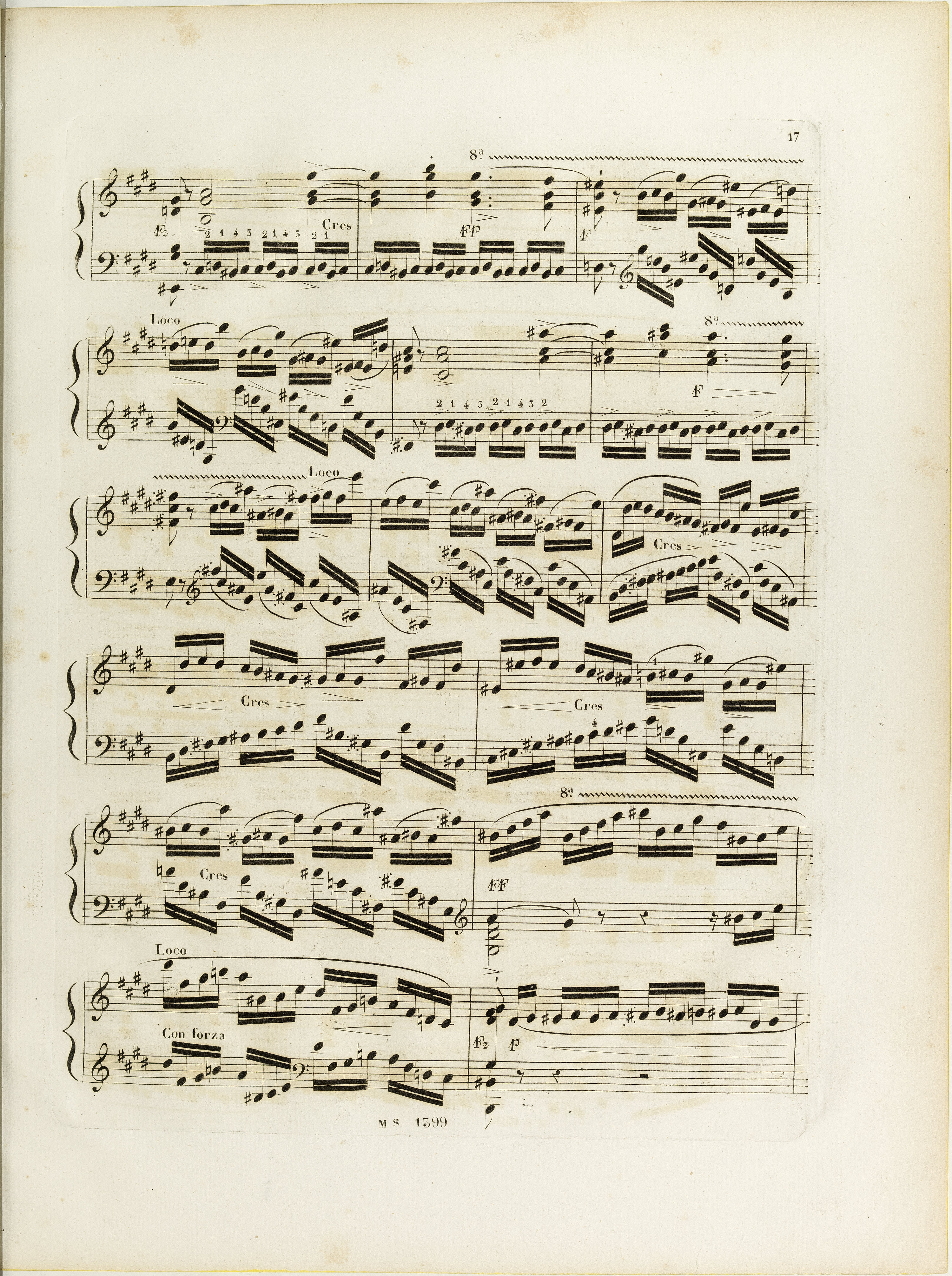



When interpreted literally, AI has in the last group of semiquavers two notes different than in the published version: the 2nd semiquaver a (without
(without  ) and the 4th semiquaver A
) and the 4th semiquaver A . According to us, it is a result of overlapping of inaccuracies and corrections, while the text intended by Chopin does not differ from the text of the remaining sources:
. According to us, it is a result of overlapping of inaccuracies and corrections, while the text intended by Chopin does not differ from the text of the remaining sources:
-
at the time of writing a
 Chopin most probably had a in mind and he even started writing a
Chopin most probably had a in mind and he even started writing a  before this note. Instead of finishing the sign, he probably decided to change it to g
before this note. Instead of finishing the sign, he probably decided to change it to g , although the remade (?) note still is more similar to a/a
, although the remade (?) note still is more similar to a/a ;
; - the last semiquaver is probably written inaccurately, too low.
In the main text we give the version of FE (→GE,EE), completed with the cautionary  before g
before g .
.
Compare the passage in the sources »
category imprint: Graphic ambiguousness; Interpretations within context; Differences between sources; Editorial revisions; Corrections & alterations
issues: Enharmonic corrections, Inaccurate note pitch in A
notation: Pitch





